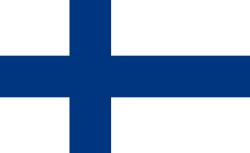Choosing the right high-visibility clothing for the appropriate situation might seem difficult due to various regulations and classes. However, it doesn't have to be!
The selection and use of high-visibility clothing are based on an assessment of the hazardousness of the conditions. High-visibility clothing helps you be seen more easily, which improves your safety and the safety of others!
1. Regulations and safety classifications
High-visibility clothing helps workers be seen more easily and stand out in their work environment. EU standards provide regulations on the type of high-visibility clothing required for different situations.
The EN ISO 20471 standard defines the regulations for high-visibility clothing, also known as warning clothing. High-visibility clothing is required for road work, traffic control, working near roads, or other high-risk situations. (Työterveyslaitos.)
The labeling of clothing that complies with the EN ISO 20471 standard includes a number indicating the visibility class. This classification is based on the amount of fluorescent and reflective materials on the garment's surface area. There are three classes, with Class 3 clothing offering the highest level of visibility. (Blåkläder.)
The EN 17353 standard, which covers visibility-enhancing products for medium-risk situations, applies in cases where the more demanding EN ISO 20471 standard is not required. These products improve visibility in daylight and/or in darkness when illuminated by an external light source. The EN 17353 standard is also divided into three classes (SFS Suomen standardit 2023.)
- Type A: Day visibility (fluorescent material)
- Type B: Night visibility (reflective material)
- Type C: Day and night visibility (fluorescent and retroreflective material)
Please note that if logos or other changes are added to the garment, they may reduce the surface area of visible materials and reduce functionality. Logos and changes must not reduce the fluorescent area below the requirements of the standard.
2. Choosing the right high-visibility clothes
High-visibility clothing for work should be chosen based on the job requirements and profession. When selecting high-visibility clothing, also consider the company's own rules and guidelines. Keep in mind that in some garments, the visibility class may be higher for larger sizes.
When selecting high-visibility clothing for leisure and recreational activities, consider the situations and times of day when the clothing will be used. High-class high-visibility clothing is especially recommended for use near roads. If the clothing will be used both during the day and in the evening, it's advisable to choose Type C high-visibility clothing. For example, high-visibility vests are a popular choice, particularly for pedestrians.
Check out our product recommendations to ensure you get the protection you need. Also, take a look at our size guide to help you choose the right-sized clothing.
EN ISO 20471 certified high-visibility clothes
Class 1 - Men
Class 2 - Men
Class 3 - Men
Class 1 - Women
Class 2 - Women
Class 3 - Women
All mens high-vis clothes
All womens high-vis clothes
Other visibility-increasing products
3. Storing and washing the high-visibility clothes
A few points should be taken into account when storing and washing high-visibility clothing:
- High-vis clothing should be kept hidden from sunlight so that its fluorescent material does not fade
- Always wash the high-vis clothing according to the garment's own washing instruction
- Wash the garment only with clothes of the same color
- Keep the high-vis garment clean. Dirt weakens the effectiveness of the reflective and fluorescent material
- If the garment has a logo, turn it inside out before washing.
4. Need help?
Tarvitsetko apua huomiovaatteiden valintaan, haluatko tarjouksen vai onko sinulla muuta kysyttävää? Täytä lomake niin otamme sinuun yhteyttä. Autamme mielellämme!
Sources
Blåkläder. EN ISO 20471. Referenced 31.7.2024. Available at https://www.blaklader.fi/fi/brandi/tuotetiedot/ppe/en-iso-20471
Blåkläder. Huomiovaatteiden opas. Referenced 31.7.2024. Available at https://www.blaklader.fi/fi/brandi/oppaita-ja-ohjeita/miksi-minun-tulisi-kayttaa-huomiovaatteita
SFS. 2023. Näy pimeässä! Näkyvyyttä lisäävien tuotteiden uudistetut vaatimukset. Referenced 31.7.2024. Available at https://materiaalit.sfs.fi/catalog/SFS/r/6815/viewmode=infoview
Työterveyslaitos. Heijastimet ja näkyvä vaatetus. Referenced 31.7.2024. Available at https://www.ttl.fi/teemat/tyoturvallisuus/henkilonsuojaimet/suojainten-valinta-ja-kaytto/heijastimet-ja-nakyva-vaatetus
Työterveyslaitos. Suojavaatetus. Referenced 31.7.2024. Available at https://www.ttl.fi/teemat/tyoturvallisuus/henkilonsuojaimet/suojainten-valinta-ja-kaytto/suojavaatetus

